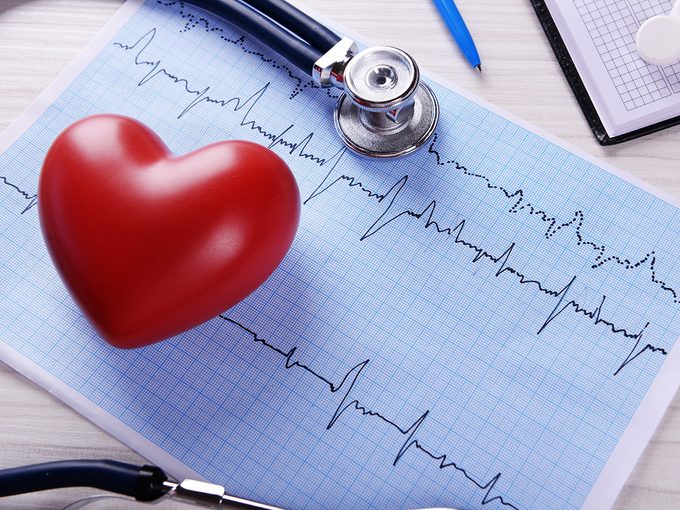How a Cardiologist Suggests You Manage Your Heart Attack Risk
My mother and sister both suffered heart attacks. How can I manage my risk?

A cardiologist’s take on managing risk of heart attack and heart disease
Every woman should be on the lookout for heart disease risk factors, but it’s especially important for those who have a family history of the disease. If you have a male family member who had his first symptom of heart disease before 45 or a female family member who was diagnosed before 55, your risk of getting heart disease is doubled. But there is plenty you can do to reduce your risk.
1. Watch your lifestyle
Eating well (use the Mediterranean diet as a guide, with plant-based foods, fish, nuts and healthy fats), limiting yourself to no more than one alcoholic drink a day, and being moderately active (with anything from hiking to dancing) for at least two and a half hours a week are the best ways to protect yourself. In fact, being active can lower your risk of heart disease by 40 to 60 per cent. Controlling stress and prioritizing sleep are also key. You probably know that not smoking is a must, but beware of other substances too — marijuana can increase heart rate and make the heart pump harder, while e-cigarettes containing nicotine affect heart rate and blood pressure.
How Candy Crush Saga can help you eat better and quit smoking.
2. Play a numbers game
When you’re monitoring your risk, you want to ensure you know five key numbers. The first is your weight — you should have a body mass index (BMI) under 25. The next is your waist circumference, which should be kept to under 35 inches because fat that collects around the midsection is particularly dangerous for your heart health. The other three numbers are measurements you’ll need to ask your doctor for: blood pressure, blood glucose and cholesterol. Your blood pressure should consistently measure in at less than 140 over 90, while your fasting glucose should be less than 5.6 mmol/L. Your ideal cholesterol levels depend on your other risk factors, so talk to your doc about your individual goals for that. If any of these numbers are too high, look at making lifestyle changes first. If there is no improvement, I’d prescribe medication to get those risk factors under control.
Take stock of these numbers around age 40. Most women who have heart disease develop it after menopause because estrogen, which has a protective effect on blood vessels, tapers off at that time. But that doesn’t mean you should wait till midlife to start caring for your heart: The damage that results in plaque buildup can start in your teens, so the sooner you start your heart-healthy habits, the better.
And here’s what a holistic nutritionist has to say on the same subject: managing heart attack and heart disease risk.
John Vyselaar is head of cardiology at Lions Gate Hospital in North Vancouver and medical lead at North Shore Heart Centre.




